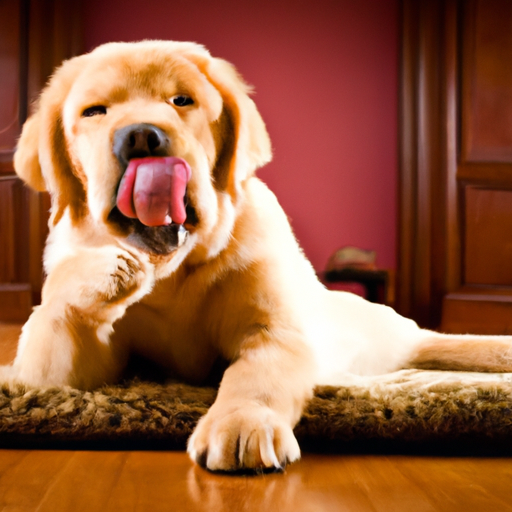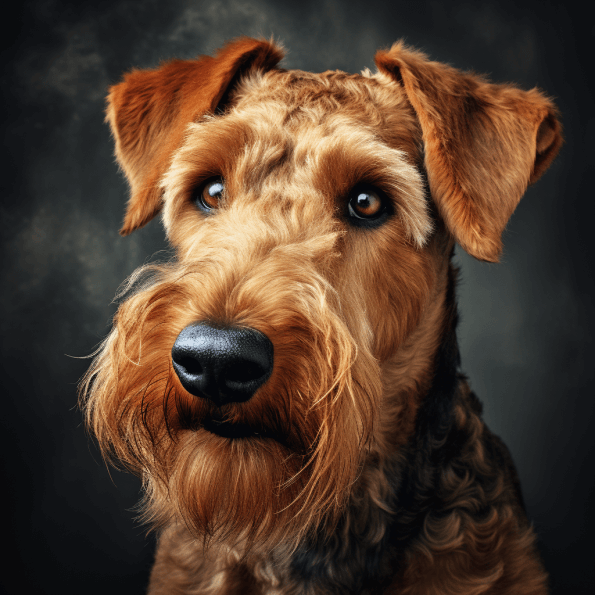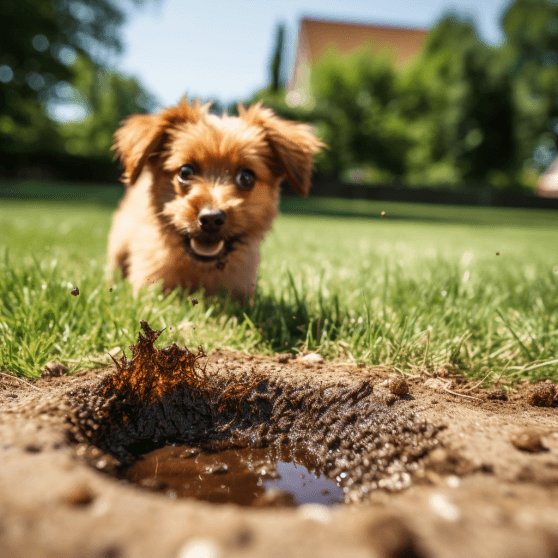American Leopard Hound
You’re about to embark on an exciting journey into the world of the American Leopard Hound, a dog breed that’s as fascinating as it is unique. This in-depth guide will transform your understanding of these all-American dogs as we walk you through their distinct features, characteristics, and qualities that set them apart from other breeds. So brace yourself for a delightful exploration of a canine that’s as colorful and captivating as its feline namesake: the American Leopard Hound.

History of the American Leopard Hound
The American Leopard Hound is a breed with a unique lineage that is firmly rooted in the historical fabric of America.
Origin of Breed
You might be interested to know that the American Leopard Hound is one of the oldest and most historically significant tree dog breeds in the United States. The breed is believed to have existed since the 17th century, with its ancestors accompanying early colonists on their journeys to the New World. Not much is known about the exact dogs that gave birth to the breed, but it’s believed they were a mix of dogs from Spain and dogs brought over by indigenous people.
Evolution Over the Years
Over the centuries, the breed has evolved in many ways, largely because of the diverse roles it has played in history. They’ve adapted from all-purpose dogs—hunting game of all sizes, protecting homesteads, and herding livestock—to more specialized roles. Today, they are primarily hunting and companion dogs, though some still serve as farm dogs in rural areas.
Historical Roles
Historically, the American Leopard Hound often served as a versatile worker. They were often relied upon by settlers to do multiple tasks like hunting, tracking, and guarding their properties. For hunters, their keen sense of smell and remarkable treeing ability made them indispensable assets on hunts for large games like bears and cougars, and smaller ones like raccoons and squirrels.
Physical Characteristics of the American Leopard Hound
A closer look at an American Leopard Hound lets you appreciate its physical characteristics, developed over centuries to serve its various roles.
Size and Weight
Generally, American Leopard Hounds are medium to large dogs. They usually stand between 21 to 27 inches tall at the shoulder and weigh between 35 to 75 pounds, with males being larger than females. This makes them robust and agile, ideal for surviving in various terrains.
Color and Coat
The name gives away a clue to one of the breed’s most distinctive features: its coat. The American Leopard Hound’s coat is short to medium in length and impressively dense, able to withstand a wide range of weather conditions. The color can vary widely from dog to dog— hence the ‘Leopard’ in the name. They can have a base color of yellow, black, or brindle and it can be solid, patched, or ticked.
Distinctive Features
Beyond its unusual coat, the breed is known for its strong, well-muscled body and powerful limbs. Its tail is also prominent, medium length, and either straight or slightly curved. Another noticeable feature of the American Leopard Hound is its eyes, which can be brown, hazel, or blue and are often expressive and intelligent.
Behavioural Traits of the American Leopard Hound
The behavioral traits of the American Leopard Hound are just as compelling as their physical features.
Temperament
In terms of temperament, the American Leopard Hound tends to be friendly, loyal, and confident. Though they have a strong hunting drive, they are usually even-tempered and can be quite gentle and affectionate with their human family. You’ll find them to be highly adaptive, intelligent, and eager to please.
Interactions with Humans
When interacting with humans, the American Leopard Hound can be as impressive as when they’re on the hunt. They generally form strong attachments to their owners and show great loyalty. With strangers, they can be reserved but are rarely aggressive without provocation.
Behaviour with Other Animals
When it comes to other animals, the American Leopard Hound usually fares well, especially if they’re socialized early. They can get along with other dogs and, surprisingly, can often live peaceably with cats and other small pets, though their hunting instincts may sometimes take over.
Activity Requirements of the American Leopard Hound
Like many working breeds, the American Leopard Hound has unique activity needs.
Exercise Needs
Considering their history as work and hunting dogs, it’s no surprise that the American Leopard Hound requires a good deal of exercise. Regular walks, jogs, and games of fetch in the yard can help them burn off their energy.
Mental Stimulation Requirements
But, it’s not just physical exercise they need. As intelligent dogs, they require mental stimulation as well. Puzzle toys, training sessions, and activities like search and rescue games can keep them mentally sharp.
Ideal Living Situations
Due to its size and activity level, a home with a large yard is a more conducive environment for the breed. However, with enough exercise and stimulation, they can adapt to apartment living.
Health Considerations for the American Leopard Hound
While generally healthy, the breed does have some health considerations to note.
Common Health Issues
While the breed is generally hardy, they can be prone to certain health issues, including hip dysplasia, heart disease, and deafness. Eye problems like progressive retinal atrophy are also possible.
Lifespan and Aging
The average lifespan of an American Leopard Hound is between 12 to 15 years. As they age, they may experience decreased mobility and common age-related changes. Regular check-ups and a healthy diet can help ensure they live long, healthy lives.
Preventative Care Recommendations
Preventative care for these dogs can include regular vet check-ups, a balanced diet, and plenty of exercises. It’s also important to do regular grooming and tick and flea checks, considering these dogs enjoy being outdoors.
Nutritional Needs of the American Leopard Hound
A proper diet is key to keeping American Leopard Hounds healthy and happy.
Dietary Requirements
American Leopard Hounds require a balanced diet that includes proteins, carbohydrates, fats, vitamins, and minerals. High-quality commercial dog food can meet these needs, but you can also supplement with natural foods like lean meats, fruits, and vegetables.
Common Food Allergies
Though not greatly predisposed to food allergies, some American Leopard Hounds can become allergic to common ingredients in dog food, like chicken, beef, or grains. Be mindful of any changes in your dog’s behavior or health after eating.
Recommended Feeding Schedules
Depending on their size and activity level, adult American Leopard Hounds often do well on two meals a day. Puppies, however, will need small frequent meals throughout the day.
Training the American Leopard Hound
Diligent training from a young age will help shape an American Leopard Hound into a well-behaved and responsive pet.
Training Techniques
Positive reinforcement techniques like praises, treats, and toys work best for this breed. Also important is consistency in commands and behaviors to help instill good habits and manners.
Early Socialization Importance
Early socialization is crucial to ensure that American Leopard Hounds grow into well-rounded dogs. Introducing them to different people, environments, and situations while they’re young can decrease nervous or aggressive behaviors later.
Behavioral Challenges & Solutions
Some potential behavioral issues include separation anxiety and stubbornness. Address these early on with proper training, ensuring the dog is well-exercised and mentally stimulated, and showing them lots of patience and love.
Grooming Regimen for the American Leopard Hound
These dogs are relatively low-maintenance, but they do require some grooming to stay at their best.
Bathing and Coat Maintenance
Bathing can be done as needed, typically every few months. Regular brushing will help keep their coats healthy and reduce shedding.
Oral Hygiene Practices
Regular tooth brushing and dental chews can help maintain good oral hygiene and prevent gum disease.
Nail and Paw Care
It’s important to trim their nails regularly to prevent injuries. Also, check their paws regularly to make sure they’re not cracked or injured, especially if they spend a lot of time outdoors.
Breeding Considerations for the American Leopard Hound
If you’re considering breeding, there are some important factors to consider.
Breeding Process
Breeding should be done responsibly and with proper knowledge of genetics, health considerations, and care for both the parent dogs and puppies. It’s best to consult with experienced breeders or a veterinarian.
Genetic Diversity & Health
Due to their long historical lineage, the breed has a good genetic diversity which is essential for maintaining the health and longevity of the breed. Potential breeding pairs should be health screened to ensure they’re not passing on any common breed-specific health issues.
Puppy Care and Socialization
Puppy care includes frequent feeding, regular check-ups, and early socialization. In addition, early beginnings of training can help pave the way for your puppies to become well-behaved adult dogs.
The American Leopard Hound in Popular Culture
Surprisingly, the American Leopard Hound hasn’t made much of a mark on popular culture.
Appearances in Film and Television
Despite being an American original, the breed isn’t commonly featured in films or tv shows. This might be due to its more rural and hunting-related history compared to other more ‘urbanized’ breeds.
Famous Owners
There also doesn’t seem to be any famous owners of American Leopard Hounds. However, given their many great qualities, it wouldn’t be surprising to see them gain popularity with celebrities in the future.
Influence on Popular Culture
While the breed might not be a staple on-screen or in celebrity circles, it holds a special place in American history, with a lineage that goes back to the country’s formative years. Beyond that, it’s a breed loved by many for its versatility, loyalty, and remarkable hunting abilities.






